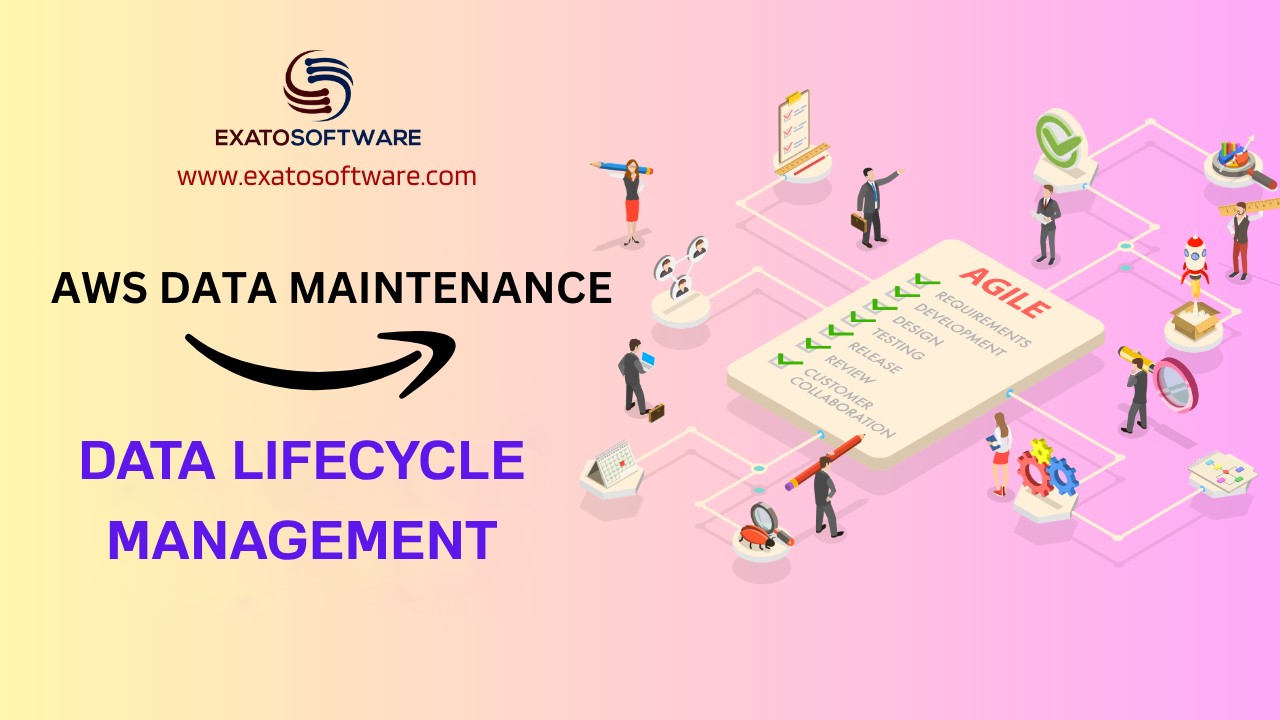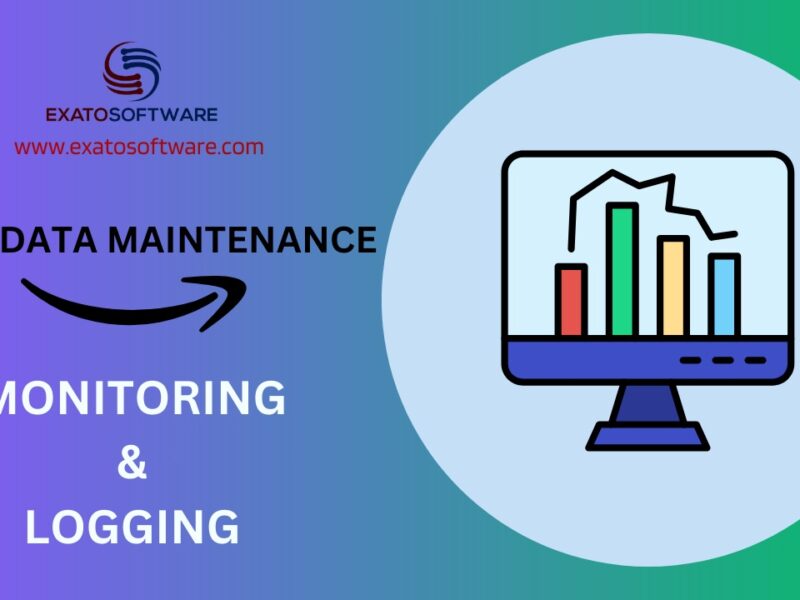Data Lifecycle Management
Data lifecycle management (DLM) in AWS refers to the process of managing data from creation to deletion or archival in a systematic and automated manner. AWS provides various services and features to facilitate data lifecycle management, allowing organizations to efficiently manage their data throughout its lifecycle.
Key components of data lifecycle management in AWS include:
1. Data Creation: Data lifecycle management begins with the creation of data through various sources such as applications, user interactions, or automated processes. AWS services like Amazon S3 (Simple Storage Service), Amazon RDS (Relational Database Service), Amazon DynamoDB, etc., are commonly used for storing and managing data at this stage.
2. Data Storage: AWS offers a range of storage services designed to accommodate different types of data and usage patterns. These include Amazon S3 for scalable object storage, Amazon EBS (Elastic Block Store) for block-level storage volumes, Amazon Glacier for long-term archival, and more. Data lifecycle policies are often applied at this stage to determine how data should be stored, replicated, and managed over time.
3. Data Access and Usage: Throughout its lifecycle, data may be accessed, modified, analyzed, and shared by various applications, users, or systems. AWS provides secure access controls and authentication mechanisms to ensure that only authorized entities can access data, while also offering services like AWS Identity and Access Management (IAM) and Amazon VPC (Virtual Private Cloud) for fine-grained access control and network isolation.
4. Data Replication and Backup: To ensure data availability and durability, organizations often replicate data across multiple AWS regions or implement backup strategies to protect against data loss due to accidental deletion, hardware failures, or other disasters. AWS services such as Amazon S3 Cross-Region Replication, Amazon RDS automated backups, and Amazon EBS snapshots facilitate data replication and backup processes.
5. Data Archival and Tiering: Not all data needs to be stored in high-performance storage tiers indefinitely. AWS offers lifecycle policies and storage classes that allow organizations to automatically transition data to lower-cost storage tiers or archival storage services based on predefined criteria such as age, access frequency, or business relevance. For example, Amazon S3 Lifecycle policies can be used to move objects to the Glacier storage class for long-term archival.
6. Data Deletion and Destruction: At the end of its lifecycle, data may need to be securely deleted or destroyed to comply with regulatory requirements or privacy policies. AWS provides mechanisms for permanent data deletion, including secure deletion of objects in Amazon S3, permanent deletion of EBS volumes, and secure data destruction services for physical storage devices.
Overall, data lifecycle management in AWS involves implementing policies, automation, and best practices to effectively manage data from creation to deletion while ensuring compliance, security, and cost efficiency throughout the data lifecycle.
Disaster Recovery and High Availability
Disaster recovery (DR) and high availability (HA) methods are critical aspects of maintaining data on AWS, ensuring that data remains accessible and protected in the event of unexpected outages, disasters, or hardware failures. Here’s how DR and HA methods work on AWS:
1. High Availability (HA):
– Multi-AZ Deployments: AWS offers Multi-AZ (Availability Zone) deployments for services like Amazon RDS, Amazon EC2, and Amazon S3. In Multi-AZ deployments, AWS automatically replicates data and resources across multiple physically separated data centers within a region. If one AZ becomes unavailable due to hardware failure or maintenance, traffic is automatically routed to the available AZ, ensuring continuous availability and minimal downtime.
– Load Balancing: AWS Elastic Load Balancing (ELB) distributes incoming traffic across multiple EC2 instances or Availability Zones, improving fault tolerance and scalability. By distributing traffic evenly and automatically rerouting requests in case of instance failure, ELB enhances the availability of applications and services hosted on AWS.
– Auto Scaling: AWS Auto Scaling automatically adjusts the capacity of EC2 instances or other resources based on demand. By dynamically adding or removing instances in response to changes in workload, Auto Scaling ensures that applications can handle fluctuations in traffic while maintaining high availability and performance.
– Global Accelerator and Route 53: AWS Global Accelerator and Amazon Route 53 provide global traffic management and DNS-based routing capabilities. These services help distribute traffic across multiple AWS regions or edge locations, improving performance and resilience for global applications while ensuring high availability in case of regional failures.
2. Disaster Recovery (DR):
– Cross-Region Replication: AWS services such as Amazon S3, Amazon RDS, and Amazon DynamoDB support cross-region replication, allowing organizations to replicate data and resources across multiple AWS regions. In the event of a regional outage or disaster, data can be quickly accessed from the replicated copy in another region, ensuring business continuity and data resilience.
– Backup and Restore: AWS offers backup and restore capabilities for various services, including Amazon S3, Amazon RDS, Amazon EBS, and AWS Backup. Organizations can create automated backup schedules, retain multiple copies of data, and restore from backups in case of accidental deletion, corruption, or data loss.
– Pilot Light Architecture: In a Pilot Light architecture, organizations maintain a minimal but fully functional version of their infrastructure in a secondary AWS region. In the event of a disaster, this “pilot light” can be quickly scaled up to full production capacity, allowing for rapid failover and continuity of operations.
– Disaster Recovery Planning: AWS provides tools and services to help organizations develop and test their disaster recovery plans, such as AWS Disaster Recovery Whitepapers, AWS Well-Architected Framework, and AWS CloudFormation for infrastructure automation and orchestration. By conducting regular DR drills and simulations, organizations can validate their DR strategies and ensure readiness for real-world scenarios.
By implementing these HA and DR methods on AWS, organizations can maintain data availability, resilience, and continuity, even in the face of unforeseen challenges such as hardware failures, natural disasters, or human errors.
Comparison between Data Lifecycle Management, and Disaster Recovery and High Availability Methods, for maintaining Data on AWS
Comparing the efficacy of Data Lifecycle Management (DLM), and Disaster Recovery (DR) and High Availability (HA) methods for maintaining data in AWS involves evaluating their respective strengths and limitations in addressing different aspects of data management and protection.
1. Scope and Purpose:
– Data Lifecycle Management (DLM): DLM primarily focuses on managing data throughout its lifecycle, including creation, storage, access, archival, and deletion. It encompasses strategies and automation for optimizing data storage costs, ensuring data integrity, and meeting compliance requirements.
– Disaster Recovery and High Availability (DR/HA): DR and HA methods are designed to ensure continuous availability and resilience of data and services in the event of failures, disasters, or outages. They involve redundancy, failover mechanisms, and replication strategies to minimize downtime and maintain business continuity.
2. Data Integrity and Compliance:
– DLM: DLM includes features for enforcing data retention policies, managing data access controls, and implementing encryption and compliance measures throughout the data lifecycle. It helps ensure data integrity, privacy, and regulatory compliance.
– DR/HA: DR and HA methods focus on maintaining data availability and accessibility, rather than directly addressing data integrity or compliance. However, they play a crucial role in protecting data from disruptions and ensuring timely recovery in case of disasters or outages.
3. Cost Optimization:
– DLM: DLM includes capabilities for optimizing storage costs through automated data tiering, archival policies, and lifecycle management rules. By transitioning data to lower-cost storage tiers or deleting obsolete data, DLM helps reduce storage expenses over time.
– DR/HA: DR and HA methods typically involve additional infrastructure and replication costs to ensure redundancy and failover capabilities. While they contribute to improved availability and resilience, they may increase overall operational costs compared to basic storage management strategies.
4. Recovery Time Objective (RTO) and Recovery Point Objective (RPO):
– DLM: DLM does not directly address recovery time objectives or recovery point objectives. However, effective data lifecycle management practices, such as regular backups and versioning, can contribute to faster data recovery and reduced data loss in case of incidents.
– DR/HA: DR and HA methods are specifically designed to meet specific RTO and RPO targets by minimizing downtime and data loss. By implementing replication, failover, and recovery mechanisms, organizations can achieve near-instantaneous failover and minimal data loss during disruptions.
5. Scalability and Flexibility:
– DLM: DLM provides scalability and flexibility in managing data across different storage classes, regions, and environments. It allows organizations to adapt data management policies and storage configurations based on changing requirements and workloads.
– DR/HA: DR and HA methods offer scalability and flexibility in replicating and distributing data and services across multiple regions, Availability Zones, or cloud providers. They enable organizations to scale resources dynamically and ensure high availability for critical workloads.
While both DLM and DR/HA methods are essential for maintaining data integrity, availability, and compliance in AWS, they serve different purposes and address distinct aspects of data management and protection. Effective data management requires a combination of both approaches, tailored to the organization’s specific requirements, risk tolerance, and regulatory obligations.



